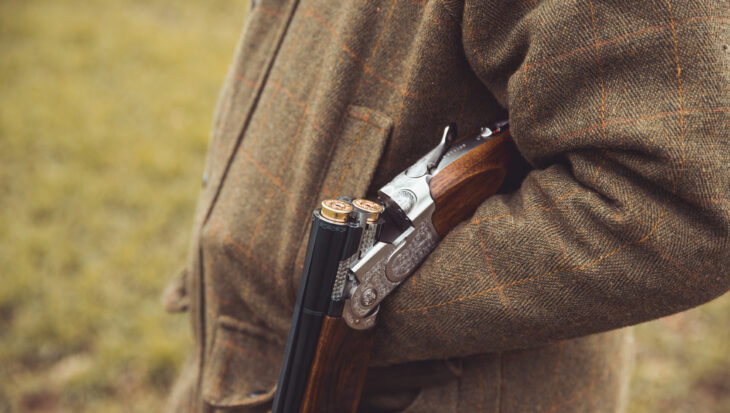Ban on the use of lead shot – finally!
Posted 10 Jul 2025

Posted on the 31st July 2015
On 12 August, a minority of wealthy, idle ‘sportsmen’ will be ferried to grouse butts on some of the country’s most beautiful upland areas. There, they will laze until beaters scare hundreds of grouse into their sights, just so that the shooters can practise their aim and blast their victims from the sky. There will be fine food, champagne and a large amount of ego on display. There has been little opposition to this tradition of excess and cruelty, but those times are changing.
Grouse shooting has rarely been under so much fire. Animal rights groups have long argued that the hype surrounding the Glorious Twelfth is a smokescreen used to obscure the enormous animal cruelty involved in ‘sport’ shooting. As well as the half a million grouse nurtured for shooting each year, grouse moor operators snare, trap, poison and shoot vast numbers of other animals and birds labelled as ‘pests’ or ‘vermin’ in order to keep their quarry ‘safe’ for wealthy guns.
Over the years, Animal Aid has gathered crucial evidence highlighting the wrongdoings of grouse moor owners. Our investigations and briefings have attracted growing ranks of supporters who object to the killing spree. From conservationists, concerned about the illegal persecution of birds of prey, to environmentalists, distraught over the burning and draining of the precious peat bogs in upland areas, the number of people campaigning against grouse shooting is greater than ever.
In July this year, the Committee on Climate Change released its 2015 progress report, which included this solemn warning on the ‘management techniques’ used on grouse moors: ‘Wetland habitats, including the majority of upland areas with carbon-rich peat soils, are in poor condition. The damaging practice of burning peat to increase grouse yields continues, including on internationally-protected sites. The Government has set ambitious targets to improve the ecological condition of important habitats and halt the decline in England’s biodiversity. However, it is far from certain that these goals will be met.’
Shortly after the publication of the Committee’s report, the RSPB’s Centre for Conservation Science launched a damning new study into the extent of burning across upland areas in Britain. It looked in detail at 45,000 square kilometres of uplands across Scotland, England and Wales, and found that burning had occurred in 55 per cent of Special Areas of Conservation (SACs) and 63 per cent of Special Protection Areas (SPAs). Most worrying, however, was its conclusion that moorland used for grouse shooting saw an 11 per cent increase in burning activity year-on-year between 2001 and 2011. This is at a time when concern is growing about the imminent effects of climate change.
Grouse moor owners drain and burn moorland in order to encourage the growth of heather, upon which their quarry – grouse – feed. Both of these practices have been widely criticised, because upland deep peat is the largest carbon store in the UK. Draining and burning leads to carbon loss and damages the ground’s ability to act as a carbon store. The uplands are also vital to water supplies and burning them leads to water discolouration and deterioration in quality.
Although moor owners have been put under pressure to block the drainage ditches, known as ‘grips’, burning precious peat bog is still permitted by government agencies, such as Natural England. In March 2014, the RSPB announced that it had discovered at least 127 separate agreements under which Natural England had ‘consented’ to burning taking place on legally protected blanket bog habitats. Many of these schemes to ‘protect’ or enhance upland areas (which include the permitted burning) are paid for by taxpayers via EU subsidies.
Animal Aid’s 2013 and 2014 reports, Calling the Shots, looked in detail at the use of public funding on Walshaw Moor in the South Pennines, owned by retail tycoon, Richard Bannister. In 2012, Natural England was set to start proceedings against the Walshaw Moor Estate for 43 counts of unconsented activity (including building roads and draining the moor). In a surprise about-face, Bannister and Natural England instead came to an agreement, which saw the Walshaw Moor Estate awarded £2.5m worth of public funds over a 10-year period. Although a schedule of work to block the grips is under way, the Walshaw Estate has a decade to complete the works, using public money to do so.
Social commentator, George Monbiot, has been highly critical about the grouse moor-owning elite’s antics – especially with regards to the public funding of a minority activity. Recently, he wrote about the Scottish Land reform bill proposals, to ‘cancel the business rate exemption (granted to the aristocracy by John Major’s government in 1994) for deer-stalking estates, grouse moors and salmon fishing.’ Monbiot’s point was that not only are such operations owned by a small number of extremely wealthy and privileged individuals, but, gallingly, they receive further tax breaks whilst small businesses are struggling to stay afloat. As Monbiot remarked dryly, ‘Talk about a culture of entitlement.’
Conservationists, too, have been overt in their condemnation of grouse shooting. Not so long ago, criticism from these quarters was carefully aimed at the illegal persecution and eradication of protected birds of prey. Over time, their concerns have been largely ignored and the systematic abuse of iconic raptors continues unabated. Many must now feel that enough is enough. Former RSPB Conservation Director and avid blogger, Mark Avery, stated in The Independent on 28 July, ‘I’ve come to the view that the faults and ills of driven grouse shooting are systemic. They can’t be remedied by a bit of tinkering, because they are so integral to the system. A sport which is all about killing large numbers of gamebirds cannot tolerate natural predation, which is why legal predator control is unremitting on shooting estates and why birds of prey are still too often shot, poisoned or trapped – despite having full legal protection for more than 60 years. That’s one circle that can’t be squared.’
A powerful indicator of the numbers of conservationists who have now joined with animal rights campaigners came in 2014, when more than 22,000 people signed Avery’s petition to ban driven grouse shooting. This year, he has resubmitted the petition, which has already garnered more than 7,000 signatures in just a few days.
The Birders Against Wildlife Crimes’ Hen Harrier Day in 2014 was tremendously popular, gaining media coverage and mobilising local people to fight for their uplands. There are other events planned for Hen Harrier Day 2015 (see below).
When it comes to local campaigning, the group Ban Bloodsports on Ilkley Moor exemplifies how much can be achieved. The group has put enormous pressure on Bradford Council to justify its decision to grant shooting rights to the Bingley Moor partnership on the publicly owned moor. Last year, in a show of defiance, campaigners held peaceful picnics on the moor just as the shoot season commenced, and more recently have engaged the support of local ramblers, runners and other users of the moor. So far the group has managed to get the council to agree to a ban on the traps and snares used to kill wildlife, and there is little doubt that more concessions to the campaigners will follow.
However, grouse shooting operations have powerful allies. The current government is packed with those who openly support bloodsports. Just a few weeks ago it tried to reintroduce hunting with dogs via the back door. Hidden under the coat-tails of the Budget announcement, a series of proposed ‘amendments’ to the Hunting Act would have allowed traditional hunting with dogs to return. Once the plan had been unearthed, the government brought forward the date of the vote, attempted to exclude the anti-hunting SNP from voting on the issue, and then withdrew the motion when it realised it would not win. But that’s not to say there is unanimity in its own ranks. Blue Fox, a group consisting of anti-hunting Conservative MPs, came out in force and joined other anti-bloodsports MPs and campaigners. Animal welfare and rights groups united to work fast to galvanise public support, culminating in a storm of online campaigning and two, huge central London marches.
The issue of bloodsports, including grouse shooting, is firmly back in the public eye. Despite the government’s attempts to protect grouse shooting, the opposition is well prepared with arguments that are scientific and watertight. What’s more, campaigners against grouse shooting now constitute a diverse, determined and unified force.
Posted 10 Jul 2025

Temperatures are rising and it’s time to get outdoors, enjoy the weather and tuck into some delicious vegan food! Thanks to an abundance of plant-based options now available, there’s an alfresco option for every tastebud...
Posted 09 Jul 2025
